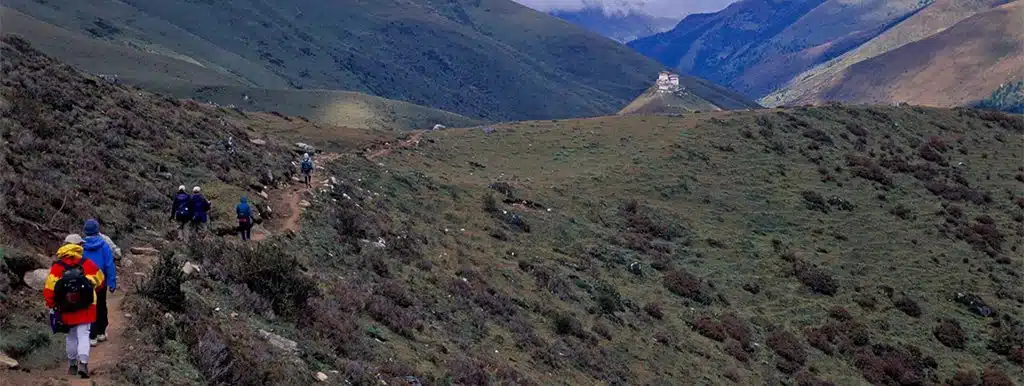Trekking has taken over travel. But what is trekking?
Trekking really just means to travel on foot. But often you’re going over rough terrain, with elevation gains, to experience natural landscapes and make authentic cultural connections with people and places. Another important distinction is that you’re traveling this way—rather than an out-and-back day hike. A trek typically spans several days, sometimes requiring the assistance of support staff or animals such as mules to help carry supplies, and involves camping along the way. Frequently thought of as a way to tour mountains, trekking may also mean journeying over other terrains, such as desert, jungle, and glacial lands—and riding horses or camels.
A timeless means of exploring a land, trekking is certainly not new, it has gained incredible traction over the past few years. A growing number of people are discovering the empowerment of treks that explore nature and culture alike.
Whether trekking the world features on your bucket list, or you’re just interested in joining a trekking group to do shorter journeys—the rewards unlocked by trekking are many. From seeing stunning untouched landscapes to disconnecting from modern devices and experiencing an entirely different way of life.
Trekking and the Environment
Closely aligned with adventure tourism and geo-tourism, trekking is the preferred mode of travel for those seeking to really connect with remote and exotic regions—to explore their biodiversity and natural geography, and to encounter their people. People love trekking for the feeling of relaxation, accomplishment, and harmony with nature and local cultures—especially when traveling in a distant land. Trekking these gorgeous landscapes is also preferred as it has minimal impact on the environment in which you trek, which is essential when practicing sustainable tourism.
The infrastructure required to trek further distinguishes it from hiking. It is not uncommon for a trekking group to stop by towns or villages for supplies, or to spend the night in a lodge.
Trekking with Nomadic Expeditions
Nomadic Expeditions has long led the field in offering world-class trekking, and we are thrilled by its rise in popularity, as we have worked hard to lay the foundation for wider transformative travel that protects the places and the peoples whose lands are being explored. From pioneering treks to countries long closed to tourism, to developing innovative programs and initiatives of sustainability and conservancy—Nomadic Expeditions is committed to enriching the lives of our travelers as well as those of local community members and the people we employ.
Our treks through Mongolia, India, Bhutan, and Nepal bring travelers through stunning natural surroundings and breathtaking vistas while also introducing you to the nomadic peoples of these places—often to visit their homes and experience their customs firsthand.
Whether you want to trek to Everest base camp or trek atop a two-humped camel through the sand dunes of the Gobi, we have designed trekking journeys specifically for you.
As travel restrictions begin to lift, we have already seen that more people than ever are interested in trekking—from the Altai to Annapurna—these getaways full of connections. So—now that you know what trekking is—grab some trekking poles and start packing your gear.

